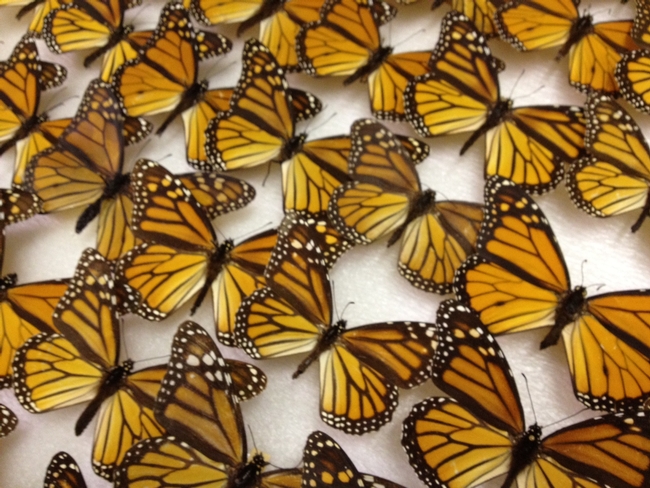Could you please pass me the bug kabobs?
Possibly, people could be divided into the following two groups: those who knowingly eat insects, and those who think they have never eaten them. Since I am still assailed by the odd nightmare in which I am bringing to my lips a well-cooked bug that suddenly springs to life, I decided to tackle my bug-food phobia by visiting entomologist Douglas Yanega of UC Riverside last week.
Yanega has eaten insects, even relished them. With no difficulty whatsoever he has ingested honey bees, termites, mealworms, crickets, grasshoppers, ants, June beetles, silkworms and even scorpions.
Eating insects is not unusual in Thailand, Yanega explained. Insects, a good source of highly digestible protein, are part of the diet in Korea, China and Mexico as well.
“You get more bang for the buck when you eat insects, where protein is concerned,” Yanega said. “True, the outer hardened shell is often not digestible, but the softer, internal tissues are. Of course, you want to avoid toxic insects. There are some that could kill you if you ate them.”
How does one know if an insect is toxic? In general, herbivorous insects tend to be more edible. Moreover, insects have evolved to alert other critters — and us! — that they are not suitable for consumption. Bright colors like red, orange or yellow juxtaposed with black on insect bodies are a sure warning from insects that you’d better stay away.
Because few people experiment with eating insects, identifying those that are both edible and delicious can be a big challenge.
“You have, in the middle of the bell curve of insects, a whole lot that are edible but taste awful,” Yanega said. “And there are those at one end of the curve that are just toxic. But at the other end of this curve lie the prized ones: these are edible and tasty.”
In the United States, most people are culturally still averse to eating insects. If you travel to Mexico, however, you might eat stinkbugs, sometimes used to flavor food. Farther off, in Japan, you could enjoy wasp grubs and silkworm larvae. In the mainland parts of Southeast Asia, you can savor giant water bugs and mole crickets.
According to Yanega, one way to get introduced to an entomological diet is to first dry out insects, and then grind them up to a powder.
“You can use this powder as a supplement,” he said. “It’s the easiest way to go about eating insects as food. You can mix the powder into, say, wheat flour to get 'insect-enriched flour.'
If you’re cringing, rest assured that most of us already eat insects unknowingly. Much of food coloring uses insects. The waxy coloring that coats candies is oftentimes insect-based. And a lot of fresh produce has a built-in level of “insect contamination.”
“As long as you are not allergic to an edible insect, you’re safe eating it,” Yanega said. “If you can get past your phobia or stigma of putting bugs in your mouth, you should have no difficulty in adding insects to your diet.”
Which is what most of us would have to do if we found ourselves stranded on an island and famished.
“Should that happen, never mind the brightly colored bugs,” Yanega said. “Instead, go after the ones that are cryptically colored, the ones that look as though they are hiding from something. They would be a much better bet.”




Posted by Ernie hettinger on September 8, 2024 at 5:56 AM